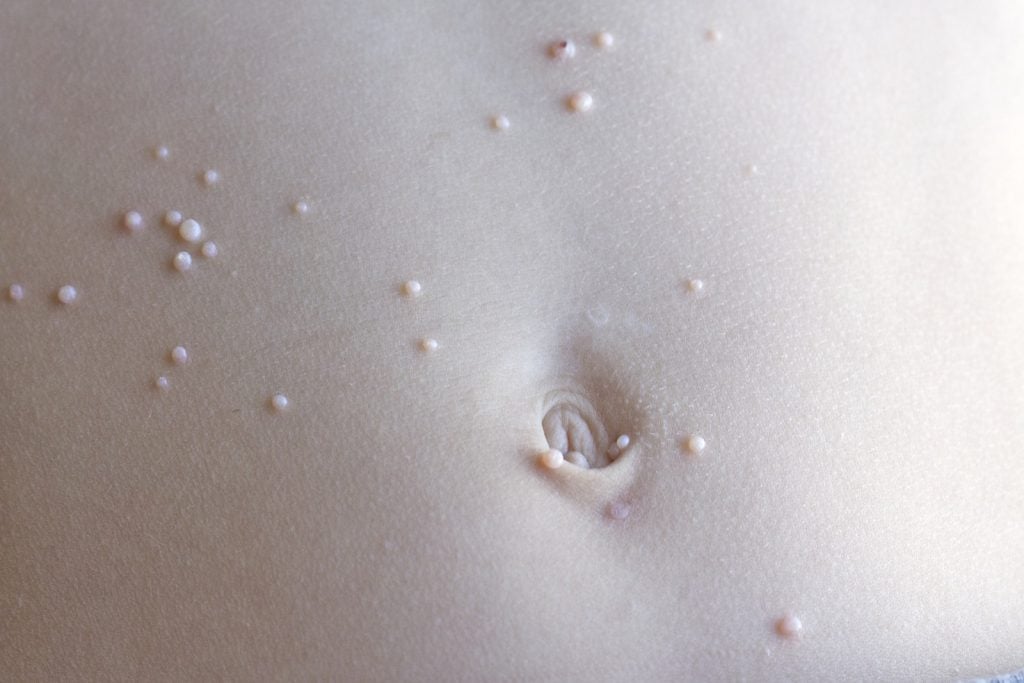Is it Molluscum Contagiosum?
It might sound like a spell from Harry Potter, but it’s not.
Molluscum contagiosum is a skin infection that causes small pearly or flesh-colored bumps. The bumps may be clear, and the center often is indented. The infection is caused by a virus. The virus is easily spread but is not harmful.
Causes of Molluscum Contagiosum
The bumps are round with a dimple in the center. They are a little smaller in size than the eraser on the end of a pencil. The bumps don’t cause pain. They may appear alone or in groups. They most often appear on the trunk, face, eyelids, or genital area. The bumps may become inflamed and turn red as your body fights the virus.
People who have a weakened immune system may have dozens of larger bumps. These may need special treatment.

Molluscum Contagiosum Transmission
The virus commonly spreads through skin-to-skin contact. This includes sexual contact or touching the bumps and then touching the skin. Touching an object that has the virus on it, such as a towel, also can spread the infection. The virus can spread from one part of the body to another. Or it can spread to other people, such as among children at day care or school. The infection is contagious until the bumps are gone.
The time from exposure to the virus until the bumps appear usually is 2 to 7 weeks, but it can take up to 6 months.1
To prevent molluscum contagiosum from spreading:
- Try not to scratch.
- Put a piece of tape or a bandage over the bumps.
- Do not share towels or washcloths.
- If the bumps are on your face, don’t shave.
- If the bumps are in your genital area, avoid sexual contact.
Diagnoses & Treatment of Molluscum Contagiosum
Your doctor will do a physical exam and may take a sample of the bumps for testing. If you have bumps in your genital area, your doctor may check for other sexually transmitted diseases, such as genital herpes.
Healthy people may not need treatment for molluscum contagiosum, because the bumps usually go away on their own in 2 to 4 months. Some people choose to remove the bumps because they don’t like how the bumps look or they don’t want to spread the virus to other people. Doctors usually recommend treatment for bumps in the genital area to prevent them from spreading.
If you need treatment, your choices may include:
- Freezing the bumps, called cryotherapy or cryosurgery.
- Scraping off the bumps, called curettage.
- Putting a chemical on the bumps, like cantharidin or potassium hydrochloride.
- Using liquids or creams, such as those used to treat warts.
Children may not need treatment because molluscum contagiosum usually goes away on its own. But if your child needs treatment, talk to your child’s doctor about how to prevent pain and scarring.
Who gets molluscum contagiosum?
Molluscum contagiosum is most common in children, especially those younger than age 12. In teens and young adults, it usually is a sexually transmitted disease. But wrestlers, swimmers, gymnasts, massage therapists, and people who use steam rooms and saunas also can get it.
Molluscum contagiosum is more common in warm, humid climates with crowded living conditions.

